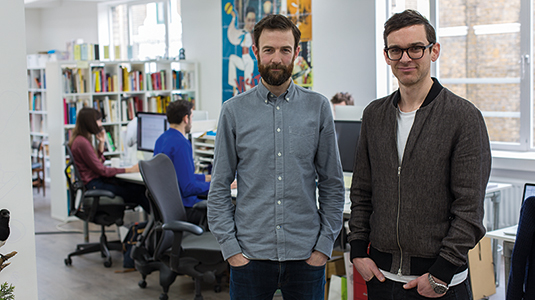3 myths about running a studio busted
Having achieved sustained success as a brand consultancy, Magpie can debunk some myths found in the design industry.

Brand consultancy Magpie's success disproves common assumptions about the way a studio should work. Fresh from a series of videos, recorded exclusively for Computer Arts, Magpie's co-founders and creative directors explain how they've gone from strength to strength.
01. More effort = more success
It's easy to assume that the more hours you put in, the better the work your studio will create. But beyond a certain point, the extra effort becomes counter-productive. Reducing the hours you spend in the office helps build in time to focus on the big picture. "People sometimes get too far into [everyday detail] and aren't able to rise above it," points out Ben Christie. "Working a four-day week gives you a bit of head space."
Christie believes the fact that Magpie's senior staff work four-day weeks is crucial to the studio's ability to sustain the quality of its output. "It enables our personal lives to work better, and that keeps us fresh," he says. "Creativity is directly linked to happiness."
02. More art direction = better work
"When you're a creative director, the most important part of your time is sitting with designers and trying to give them direction about their work, and that requires being in the studio," says David Azurdia. "But not being in the studio every day creates a good ebb and flow. The day we're not here is an opportunity [for the rest of the team] to get their heads down and not be interrupted."
As well as creating a valuable change of pace, not having senior staff on hand all the time encourages Magpie's more junior designers to develop new skills. "The four-day week is a team effort," says Ben Christie. "It enables them to get more responsibility at certain points [of a project]."
03. More creatives = more creativity
Hiring more designers can seem like the obvious way to increase your creative firepower, but it can actually be more efficient to hire project managers, reducing the time your existing staff have to spend on administrative tasks. "Employ people who are well-organised," says David Azurdia. "We have a 4:6 ratio of accounts managers to creatives, which is quite a high proportion."
"From the beginning, we realised the value of project support, so we've never feared taking on those people," adds Ben Christie. "People can be afraid of structure, but it can be liberating. If you manage projects well, it frees you up to do the bit of work you really want to do."
Daily design news, reviews, how-tos and more, as picked by the editors.
This article was originally published in Computer Arts magazine issue 253. Buy it here.
Jim Thacker is a freelance writer and editor.
